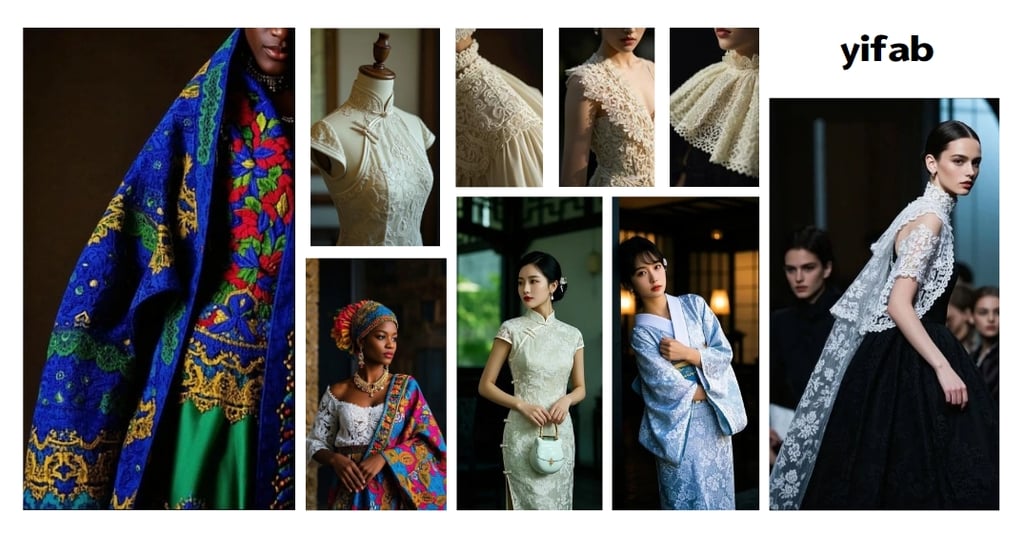Lace Fabrics in Fashion: Exploring Cultural Influences and Global Trends
Blog post description.
4/11/20252 min read


Lace Fabrics in Fashion: Exploring Cultural Influences and Global Trends
Lace fabrics have a rich history that spans across cultures and continents, playing a significant role in the evolution of fashion. From delicate European designs to bold interpretations in Asia, lace has been adapted and embraced worldwide. Here’s a look at how cultural influences have shaped the use of lace in modern fashion.
1. European Lace: A Symbol of Elegance
Lace has deep roots in European fashion, especially in countries like France, Italy, and Belgium, where intricate lace-making techniques date back to the 16th century. Historically, lace was a symbol of wealth and status, often used for royal garments and ceremonial attire. Today, European designers continue to incorporate lace into haute couture collections, blending tradition with modern styles for a timeless look.
2. Asian Lace: Fusing Tradition with Contemporary Style
In countries like China and Japan, lace is often combined with traditional fabrics like silk and brocade. In contemporary Asian fashion, lace is used to add a layer of softness and femininity to otherwise structured garments. From the delicate lace collars of Chinese qipaos to the modern lace elements in Japanese street fashion, lace fabrics offer versatility and a nod to both tradition and modernity.
3. African Influence: Bold and Intricate Lace Designs
In Africa, lace fabrics have become an essential element of high-fashion and everyday attire. African lace often features bold patterns and vibrant colors, reflecting the region’s rich cultural heritage. These lace designs are frequently used in ceremonial clothing and formal events, adding an element of glamour to traditional outfits.
4. Modern Global Trends
In today’s global fashion scene, lace continues to transcend cultural boundaries. Designers from all over the world mix lace with other materials like leather, denim, and silk, creating innovative looks that celebrate diversity and creativity. From runway collections to street style, lace remains a symbol of elegance and cultural influence, evolving with global trends while retaining its timeless charm.
The enduring popularity of lace in fashion highlights its cultural significance and versatility. Whether in traditional garments or contemporary designs, lace fabrics continue to shape global fashion trends and inspire designers worldwide.
